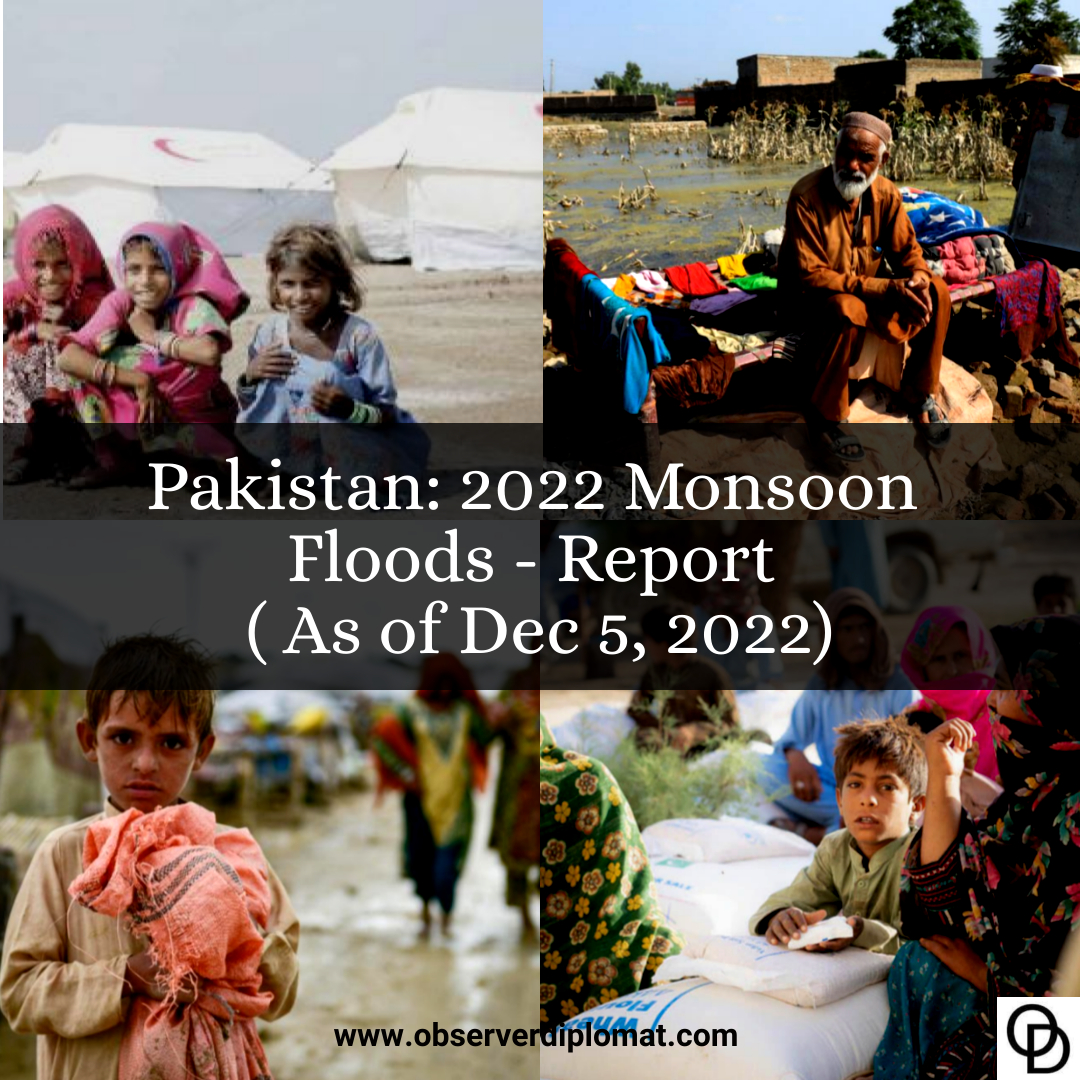The OCHA Humanitarian Advisory Team (HAT) in Pakistan worked with other aid organisations to prepare this report. It covers the period of November 11 through December 5, 2022. The next following report will be released on January 6, 2023.
According to this report, floodwaters in many flood-affected districts across Pakistan continue to recede. The Dadu, Kambar, Shahdad Kot, Khairpur, Mirpur Khas, Jamshoro, Sanghar, Umer Kot, Badin, Shaheed Benazir Abad, and Naushahro Feroze districts in Sindh, as well as the Sohbatpur and Jaffarabad districts in Balochistan, continue to report standing flood waters, though. According to imagery from the United Nations Satellite Centre (UNOSAT), an estimated 8 million people are still at risk of being inundated or living nearby.
According to Sindh’s Provincial Disaster Management Authority, around 240,000 people were still homeless in the province as of December 3, down from 6.5 million in early September. According to reports, most flood victims live in host communities, with the remainder in tent settlements and relief camps. While millions of people have been able to return home due to the flooding, there are reports of substantial service gaps in the areas where they have produced, in addition to significant effects on homes, farms, and livelihoods.
The World Health Organization (WHO) reports that in the majority of the flood-affected districts, cases of malaria, cholera, acute watery diarrheal illnesses, and dengue fever are on the decline. From over 100,000 confirmed cases at the beginning of October, the overall number of malaria cases has dropped to about 50,000. Balochistan has had a 25% decrease in malaria cases, KP has seen a 58% decrease, and Sindh has seen a 67% decrease. However, pockets of Sindh and Balochistan with persistent standing water continue to report high rates of malaria and cholera outbreaks. About 70 suspected cases of diphtheria were reported in November 2022 from the Punjab, Sindh, and KP regions that had experienced flooding.















